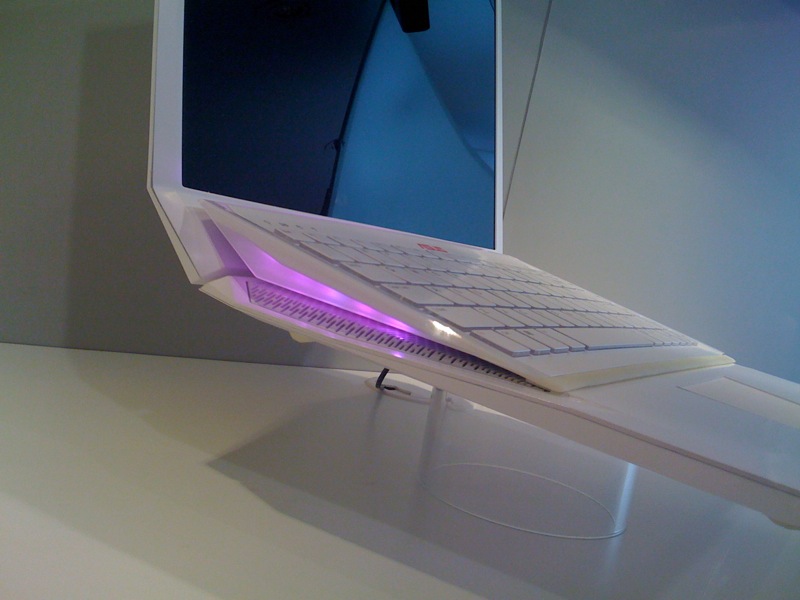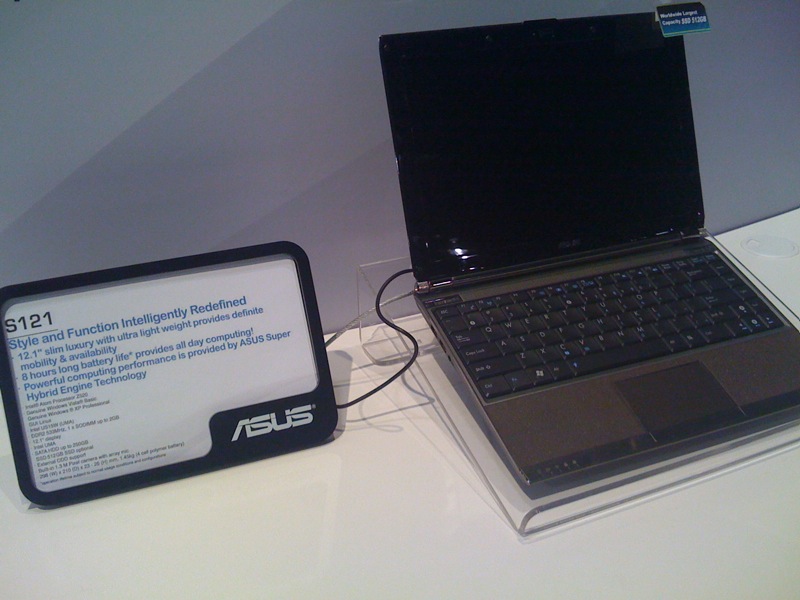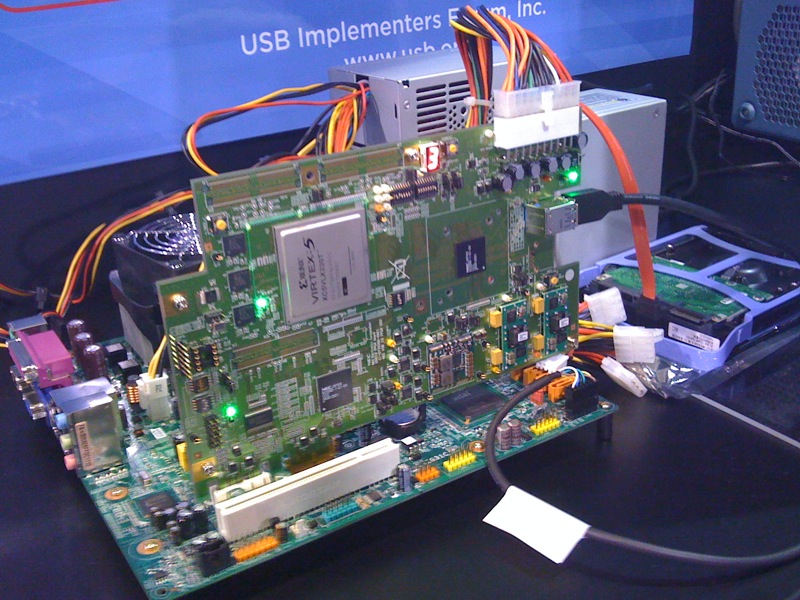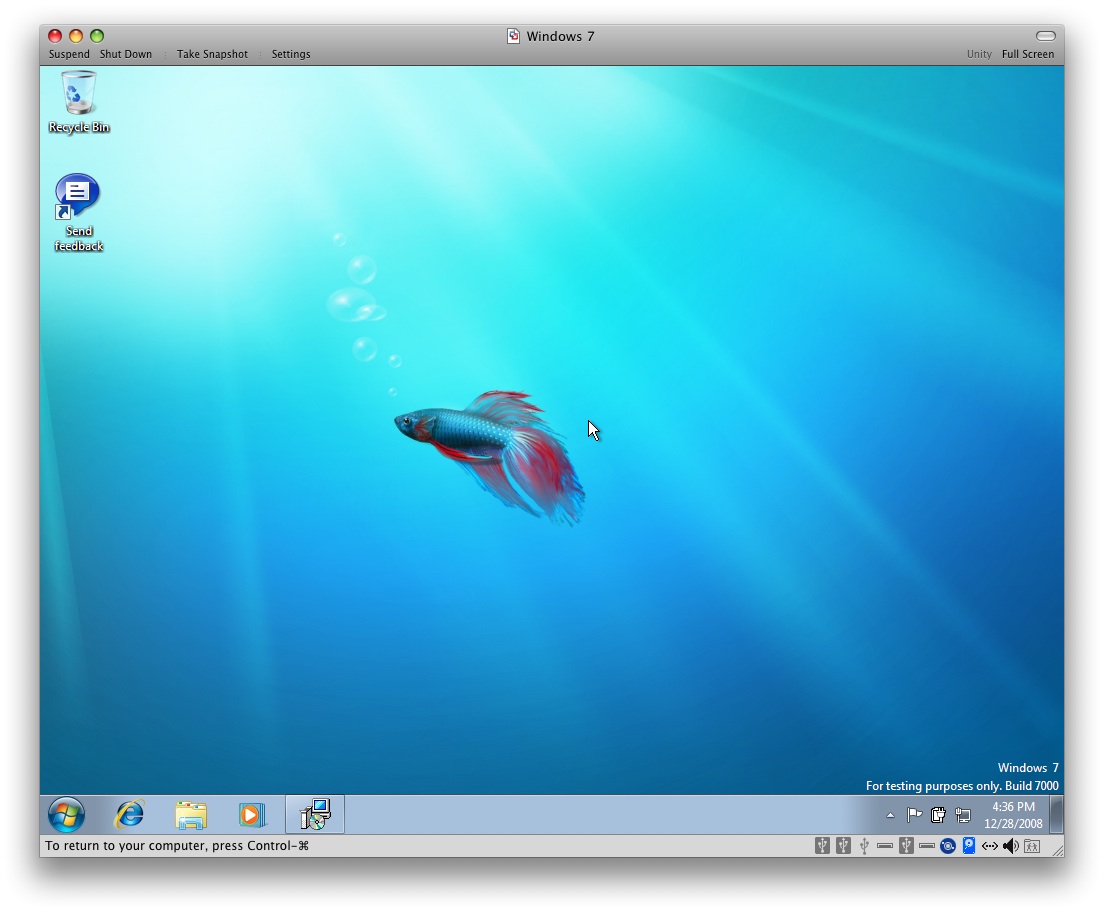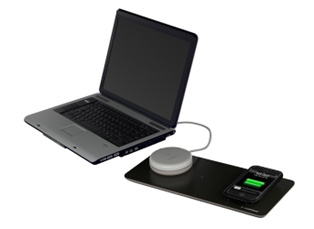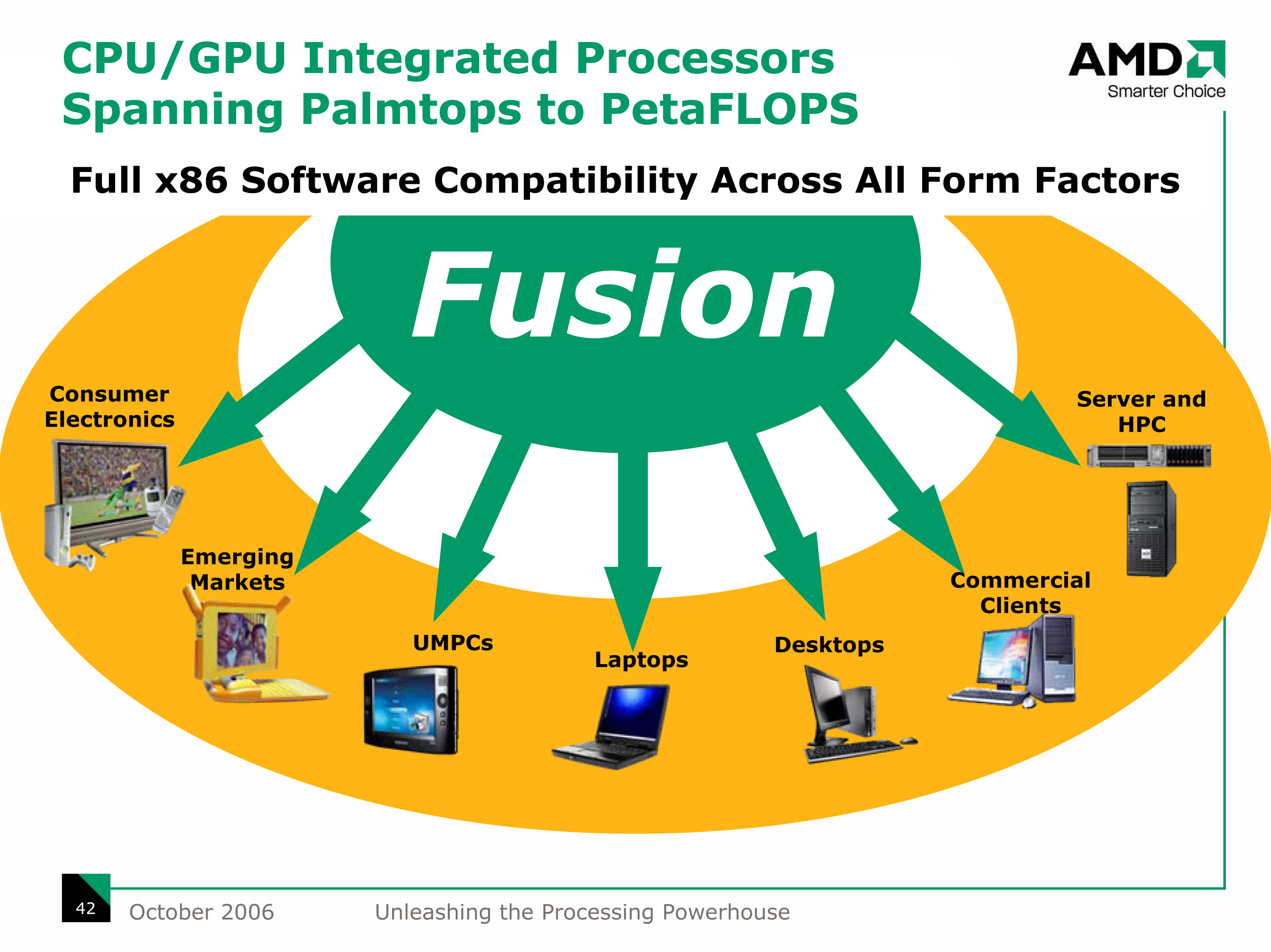FEATURE: THE BEST OF CES '09: Part 1
CES is always a big show, always contains a lot of glitz and a lot of hype. CES is where many companies show off existing products, products that are already on the market. But we're not interested in stuff already on the market.
This year at CES, there were quite a number of things that really grabbed our attention. Some of these things though, aren't available for purchase yet. Even so, they're still a great indicator of what's to come. Here's a list of 10 things I saw at CES that I think were pretty cool:
10. Asus' concept folding origami laptops
We can't yet figure out how these things closes, but the concept still looks cool. One Asus representative said to us "we can do what Apple does too. We have everything to do it." No doubt, Asus has the manufacturing prowess to turn out some amazing looking products that break conservative form and function. We're definitely looking forward to the realization of these prototypes, but for now we'll have to wait.
The Asus prototypes don't yet have any specifications, but they're nearly as thin as Apple's MacBook Air. On one of the prototypes, the keyboard pops up like a pop-up booklet, and reveals pink neon lights that glow beneath the keys. Another prototype has a flush, surface panel looking keyboard, reminding us of the original Motorola RAZR when it came out--although I can't imagine typing on this prototype comfortably. I'll take a chiclet keyboard, thanks.
9. Asus 512 GB SSD S121 notebook
Asus was definitely on a role at this year's showing; launching its S121 notebook caused some big noise.
Get Tom's Hardware's best news and in-depth reviews, straight to your inbox.
Despite only costing $1600, the S121 comes packed with a whopping 512 GB SSD drive, making the S121 the notebook with the largest SSD drive, in the world. The benfits of having an SSD on a notebook? You don't need to worry about vibrations--you can truly be mobile.
Although Asus didn't say who the drive manufacturer is for the monstrous SSD, we'll take a guess that it's Toshiba, since Toshiba is the only company right now with a non-industrial, consumer level 512 GB SSD.
Did I mention the S121 is only $1600? The price is what we love most about the S121, that and Asus has a real model on display and not just a prototype. We expect to see more SSD-only notebooks to be released this year. There's definitely no stopping the notebook excitement.
8. Intel demonstrates near Minority Report-like 3D touch display
Everyone drools over the fictional display in Minority Report; the one Tom Cruise famously uses to look for criminals that actually haven't yet committed a crime. Even though we're not quite there yet, Intel's touch display gets us pretty close (Gizmodo). The actual capacitive screen is sandwiched between two planes of glass and responds to touch. You can rotate the 3D display in any direction and while it looks promising, multi-touch isn't yet supported--you can only use one finger at this time.
Intel said that it's working on a new version of the display that will support some gestures and allow for more touching, similar to the way Microsoft's Surface works.
We're still looking forward to the day we have a Minority Report-like display, where you can freely use your hands in mid-air and control objects in real-time 3D. Either way, we're excited about the future of displays.
7. Mitsubishi's 65-inch LaserVue melts your eyes
LCD, Plasma, OLED? Forget those. What's in is laser technology. Mitsubishi demonstrated its L65-A90 laser based TV at CES this year and those who were lucky enough to see it were left with their jaws open or eyeballs toasted, whichever came first.
The LaserVue L65-A90 essentially gives the best picture of any display technology, or so says Mitsubishi. When compared directly to the best plasmas however, the difference isn't so drastic. For example, Pioneer's Kuro Elite plasmas still represents the best TVs you can currently buy, bar none.
The LaserVues definitely deliver in image quality however, more than matching the black levels of a Kuro, and using significantly less energy. The LaserVue displays are also 120 Hz displays, so if you're thinking of using the ultra high contrast screens along with Nvidia's GeForce 3D system, these babies are ready to go.
6. SuperSpeed USB (USB 3.0): massive speed, heavy CPU usage
With storage products increasing in speed and capacity, we're looking for the next breakthrough in external storage interconnect, and USB 3.0 is it. Boasting a throughput rate of 500 MB/sec., USB 3.0 has the bandwidth to handle major data pumping. Imagine transferring an entire CD's worth of data in just about a second. That's what we saw at CES this year with live demonstrations and a four drive SSD RAID 0 setup--fast!
But don't get your hopes up just yet. While it's true that USB 3.0 will indeed be capable of some impressive throughput speeds--with the right hardware--it'll be a different picture when the technology makes it down to integrated motherboard solutions. The demos we saw at CES were done using high-speed add-in PCI-E boards with powerful onboard processors. These boards take all the processing load away from the system CPU and is dedicated to doing only that. Motherboard solutions will be host based, meaning transfers at high speeds will heavily tax the system processor. Unlike FireWire, USB relies heavily on the main CPU and depending on what CPU is in place, throughput performance can swing in either direction.
Even with the host bottlenecks in place, USB 3.0 raises the throughput bar way beyond USB 2.0, giving major headroom for some crazy external storage solutions.
5. Windows 7 Beta free for all, download madness
Microsoft revealed at the beginning of the year that Windows 7 beta would be entirely open to the public. This is the first time that Microsoft has made a beta fully open. Downloads are already approaching its 2.5 million download limit, but Microsoft revealed this week that it would lift the limit for a few more weeks. Those wishing to try out Windows 7 beta are free to download as they please.
What's new in Windows 7 beta? Well, from the last pre-beta, few changes are visible to the naked eye. Unless you're a developer, you may be disappointed. Underlying core operating system changes are many however, improving the stability of the OS significantly. Having spent a week with Windows 7 beta, I can confirm that in its state, Windows 7 is virtually ready for release.
Only a few caveats remain. For example, Aero Shake is still buggy and remains disabled in the beta--although you can try it with an unlock tool. OS responsiveness feels very zippy, and the changes from Vista to Windows 7 make the upgrade worthwhile. Windows 7 beta is one of the best beta releases ever from Microsoft, and that's saying a lot.
Users still on Windows XP may eventually find that Windows 7 is a worthy upgrade, but those on Vista will find that Windows 7 is what Vista should have been, and may feel like Windows 7 is more like a Vista SP2 update than a brand new OS.
Free for all ends on January 24th.
4. pureSilicon's massive 1 TB Nitro SSD
This product just gives us that funny feeling inside. When every other SSD drive is small and paltry, pureSilicon's Nitro drive boasts the world's largest capacity. Call it a beast because it is one. We're going to guess that the price for the Nitro 1 TB is as big as its capacity, considering that its throughput speeds are similar to that of Intel's fastest Extreme line of SSDs.
-- Transfer rate: 300MB/sec
-- Sustained read: 240MB/sec
-- Sustained write: 215MB/sec
-- Random read (IOPS 4K): 50,000
-- Random write (IOPS 4K): 10,000
-- Latency < 100 µsec
Although the drive is targeted at industrial applications, pureSilicon definitely sets the bar higher for SSD manufacturers. We can epect to see higher capacity drives throughout the year, while prices continue to drop. Imagine tossing these babies in a RAID 0 setup--we'll take four please.
3. Charging your mobile devices without all the cords
Definitely one of the cooler sightings at CES were products from a company called Powermat. The company demonstrated a modified iPhone, that when placed on special pad starts charging without connection to any wires. The technology uses something called magenetic induction as a power delivery method, and we're extremely stoked to see this technology make it to consumer devices.
Powermat also demonstrated some add-on products where you can plug a Powermat adapter to a notebook for example and lay the end module on a charging pad--although this slightly defeats the purposes of wireless charging.
We can see all sorts of ideas for this technology. Imagine having this technology integrated into your work desk, where you can just place your notebook, phone, MP3 player, and other goodies on the table surface and have them start absorbing juice. Even better, placing a LCD display on your table and not having to plug the unit in--it just turns on and works. I personally can't wait for this technology to make it to mobile devices.
2. AMD Fusion Rendering Cloud hints at the future of gaming; reveals dark age broadband technology
Imagine playing the latest 3D games on your hand held or old computer. AMD says its Fusion Rendering Cloud can do just that--and more. AMD representatives say that up until now, everyone thought that Fusion was just the marriage of the GPU and the CPU into one chip. Technically, that's what it, but AMD says Fusion is so much more.
With the Fusion Rendering Cloud, AMD wants to process and render all the latest 3D games server side--in the cloud--and then compress and push that to a user device, even if it's a mobile phone. AMD imagines that gamers will be able to play the latest games over their broadband connection without worrying if their GPUs are fast enough--all rendering done server side.
There are a lot of hurdles to go through for AMD. First off, broadband speeds in North Amerca aren't much to write home about. In fact, we're so far behind in broadband technology it's pretty depressing. We're talking a lot of lag here for first person shooter type games. No one wants lag. We can see this being sucessful with slower games like RTS, platformers, etc.
Second, there's the issue of resolution. With the state of North American net connections, we're not going to be able to play games at very high resolutions. We'll be lucky if we can play anything beyond 720p.
Third, most ISPs these days are capping customer bandwidth usage down to miniscule chunks. Don't expect to play for too long with high resolution video constantly streaming to your PC. Instead, expect large connection bills sent to you.
Don't get us wrong, AMD's Fusion Rendering Cloud is a great concept, it's just being developed in a society where broadband connection moves backwards instead of forwards. AMD Fusion Rendering cloud: win; North American ISPs: fail.
1. Asus's ultra-slick, ultra-cool Eee Keyboard
This is probably my favorite pick of the show. Asus demonstrated an Apple Keyboard-like product with an integrated 5-inch display (Gizmodo) wher eyou can take control of a multitude of functions. In fact, the Eee PC is an entire computure crammed into a sleek keyboard.
Inside specs include:
-- Intel 1.6 GHz Atom CPU
-- 1 GB of RAM
-- 16 GB or 32 GB integrated SSD
-- 802.11n Wi-Fi and Bluetooth
-- HDMI (and wireless HDMI!), VGA, USB 2.0, audio and Gig-E Ethernet ports
No word on the GPU but at this point, the Eee Keyboard is so cool I'm not even thinking about the GPU. There's no word on wheather the Eee Keyboard has an onboard battery, but that would seal the deal.. We can imagine the Eee Keyboard being the ultimate HTPC. And if Asus could integrate Powermat's magnetic induction technology, I would buy one immediately (Boy Genius Report). I might still buy one anyway, although no pricing information or availability time frame were available.
What's the coolest thing you saw out of CES this year? What technologies excite you? Let us know in the comments!
-
Shadow703793 ReplyFirst off, broadband speeds in North Amerca aren't much to write home about. In fact, we're so far behind in broadband technology it's pretty depressing. We're talking a lot of lag here for first person shooter type games. No one wants lag. We can see this being sucessful with slower games like RTS, platformers, etc.
Very true.
Second, there's the issue of resolution. With the state of North American net connections, we're not going to be able to play games at very high resolutions. We'll be lucky if we can play anything beyond 720p.
Third, most ISPs these days are capping customer bandwidth usage down to miniscule chunks. Don't expect to play for too long with high resolution video constantly streaming to your PC. Instead, expect large connection bills sent to you.
..... AMD Fusion Rendering cloud: win; North American ISPs: fail.
-
engrpiman The Asus keyboard looks cool and all but it seems to lack a number pad.Reply
I would have no problem with them using the top of the keyboard as a display (like the G15 but bigger, much bigger).
Or am I the only person that finds the top number keys unusable(for calculation)? -
burazechan 3. Charging your mobile devices without all the cords "Powermat"Reply
This technology boasts quite a awesome future if it can be brought to the modern market place. This idea can span further in the future. Possible even combining Intel's display.
8. Intel demonstrates near Minority Report-like 3D touch display -
tuannguyen engrpimanThe Asus keyboard looks cool and all but it seems to lack a number pad. I would have no problem with them using the top of the keyboard as a display (like the G15 but bigger, much bigger). Or am I the only person that finds the top number keys unusable(for calculation)?Reply
I think that screen can also double as a number pad, touch screen number pad that is.
Pretty cool computer. I want. :)
/ Tuan -
traviso 3. Charging your mobile devices without all the cordsReply
Until you get cancer from working inches away from this thing for about 20+ years. I'll pass, I'm very pessimistic about high power devices that broadcast even just an inch away.
Guilty until proven innocent in my book. -
pheadland ReplyThe LaserVue displays are also 120 Hz displays, so if you're thinking of using the ultra high contrast screens along with Nvidia's GeForce 3D system, these babies are ready to go.
Nope. The Laservue only supports 60Hz input, which it then multiplies to 120Hz internally. You need a 120Hz input to do Nvidia's 3D trick. -
Master Exon ReplyWe can see this being sucessful with slower games like RTS, platformers, etc.
I completely disagree. Lag can destroy timing during jumps, or leave out essential clicks or opportunities to click in RTSs. -
burazechan Just so it is know, no "electricity" is being transmitted from the powermatt to the device. It uses a magnetic field to induce electron activity, through stimulation.Reply -
zodiacfml amen. +1.Reply
Master ExonI completely disagree. Lag can destroy timing during jumps, or leave out essential clicks or opportunities to click in RTSs. -
the_timonator I agree about our ISP's being slower than the rest of the rest oof the worlds it's sad very sad especially when you consider we have Comcast!Reply
